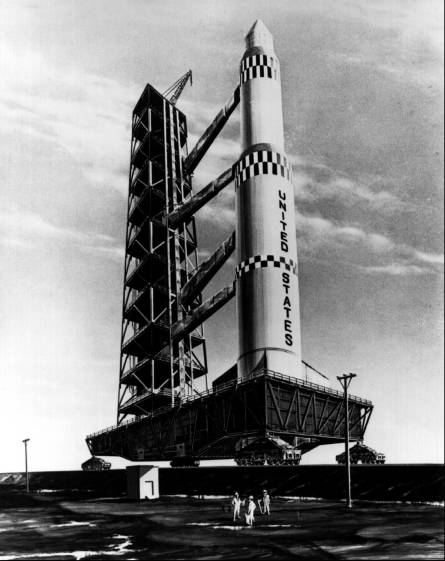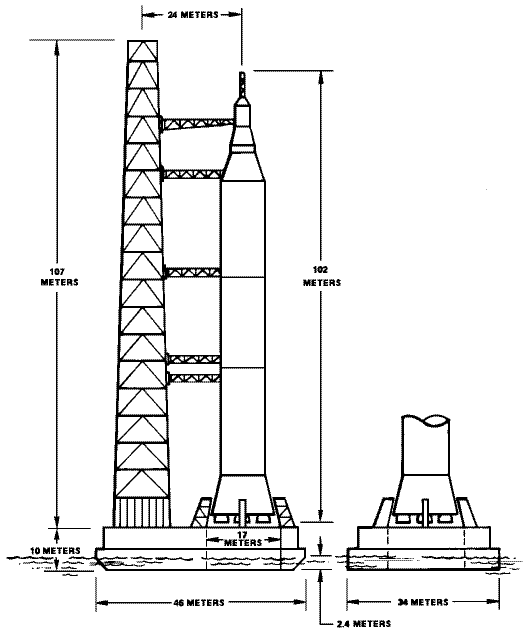
While rocket and spacecraft plans were proceeding, the Martin Marietta Corporation of Baltimore began work on a two-part launch facility study. In part one Martin was to recommend an "optimum concept for facilities to launch Saturn C-3 vehicles at specified rates"; part two involved design of a launch complex based upon the selected concept.9 The Martin team reported its part one findings orally at Huntsville on 27 September 1961. As in its earlier C-2 study, the Martin Company found the fixed concept superior for a launch rate below 12 Saturns a year and the mobile concept clearly preferable at annual launch rates above 24. The team recommended moving the rocket by canal. The 3,350-meter safety distance between assembly building and pad (almost twice that for the C-2) and the C-3's greater weight had multiplied rail costs. Martin placed the cost of one barge launcher-transporter and pad at $8.152 million, while estimating the cost of comparable rail facilities at $21.965 million. Other advantages of the canal system included more room for bigger cargoes (growth potential for the Nova), a turning basin that compared favorably with complicated switching arrangements by rail, and best use of the Cape's marshy terrain. Although acknowledging a lack of data, the team discounted the wind effect on a barge transporter.10

Sketch of Nova being transferred by rail.
At the end of the presentation, von Braun asked the Martin team to interrupt their C-3 study and conduct a quick investigation of launch requirements for a Saturn C-4. Martin's mid-October report contained no major changes. A Launch Facilities and Support Equipment Office (LFSEO) study, completed in late October, reached similar conclusions. Assuming an annual launch rate of 30 Saturn C-4s, LFSEO placed the cost of fixed facilities at $350.5 million, of rail $278.2 million, and of barge $259.1 million. The barge savings came entirely from the canal's lower cost. The study noted that "movement of a transporter launcher with vehicle by barge will present some difficult engineering problems [but] preliminary investigation has shown that it is feasible and within current 'state of the art' capability."11

Sketch of Saturn C-4 being transferred by barge, Martin Co. concept, January 1962.
As LOD moved ahead with LC-39 planning, some of its members began to have second thoughts. Georg von Tiesenhausen noted in October that "after an initial period of general acceptance, various segments of LOD are now reluctant to go ahead to develop this [mobile] concept." The size of the C-4, the boldness of the concept, and uncertainty about future launch rates contributed to the uneasiness. Von Tiesenhausen did not agree with the critics: "There is no insurmountable problem involved, engineering-wise or operationally, which appears, that cannot readily be solved... This concept is highly flexible, readily expandable, and most economical for launch rates to be expected in the future."12
Connell & Associates, engineering consultants on LC-34 and LC-37, did not share this optimism and volunteered criticism in November. Harvey Pierce's eight-page letter to Debus acknowledged certain advantages or the mobile concept: more efficient use of land and personnel; only one launch control center; assembly and erection inside a building; and a brief checkout period (one week on the firing pad). The disadvantages, however, were more significant:


